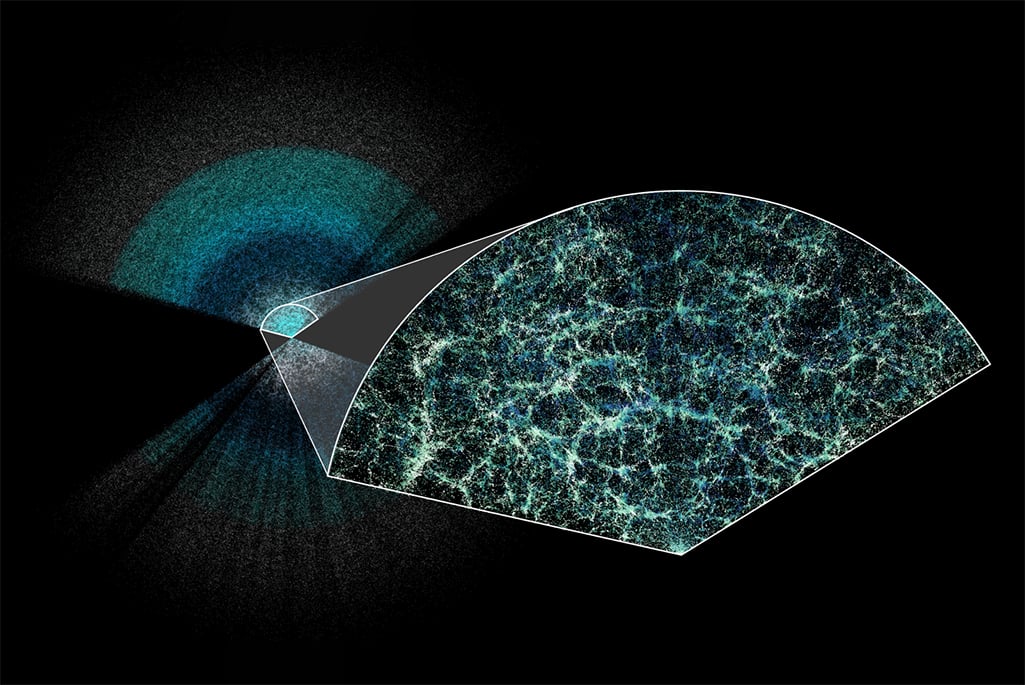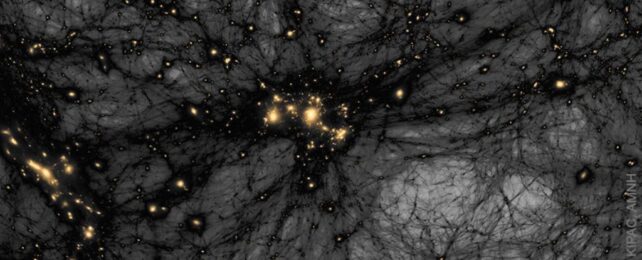For a while now, there has been a problematic mystery at the heart of the standard cosmological model.
Although all observations support the expanding Universe model, observations of the early period of the cosmos give a lower rate of acceleration than more local observations. We call it the Hubble tension problem, and we have no idea how to solve it.
Naturally, there have been several proposed ideas: what if general relativity is wrong; what if dark matter doesn't exist; what if the rate of time isn't uniform; heck, what if the entire Universe rotates.

So, let's add a new idea to the pile: what if dark matter evolves?
While there have been several models proposing an evolving dark energy, the idea of evolving dark matter hasn't been widely considered. The reason for this is twofold.
First, the observations we have of dark matter are excellent. They point to the presence of some kind of material that doesn't interact strongly with light.
The only major weak point is that we haven't observed dark matter particles directly.
Second, the vast majority of folk opposed to dark matter focus on eliminating it altogether through things like modified gravity. They figure dark matter is fundamentally wrong, not something to be tweaked.

That makes this new idea rather interesting.
In this work, the authors look at both evolving dark energy and evolving dark matter and argue that the latter is a much better fit to observational data. The first thing they note is that the two models are somewhat related.
Since the evolution of the cosmos depends in part on the ratio of energy density to matter density, a model with constant dark matter and evolving dark energy will always appear similar to a model with evolving dark matter and constant dark energy.
They then go on to explore the idea of some kind of exotic dark matter. One that has a changeable equation of state (EOS). To match observation, the dark matter EOS must oscillate in time.
This isn't an outlandish notion. Neutrinos have mass and don't interact strongly with light. While they can't account for all the dark matter of the Universe, they are a form of hot dark matter. And neutrinos undergo mass oscillation.
Perhaps cold dark matter particles undergo a similar oscillatory effect. The authors find that the best fit to observational data is a Universe where about 15 percent of the cold dark matter is oscillatory and the remaining 85% is standard dark matter.
This would allow for the Hubble tension to be covered while still matching the dark matter observations we have.
It should be stressed that this work presents a toy model. As the authors themselves note the work does is a broad concept that does not pin down specific constraints for dark matter particles.
But this work does open the door to a broader range of dark matter models. At this point, evolving dark matter is worth considering.
This article was originally published by Universe Today. Read the original article.
